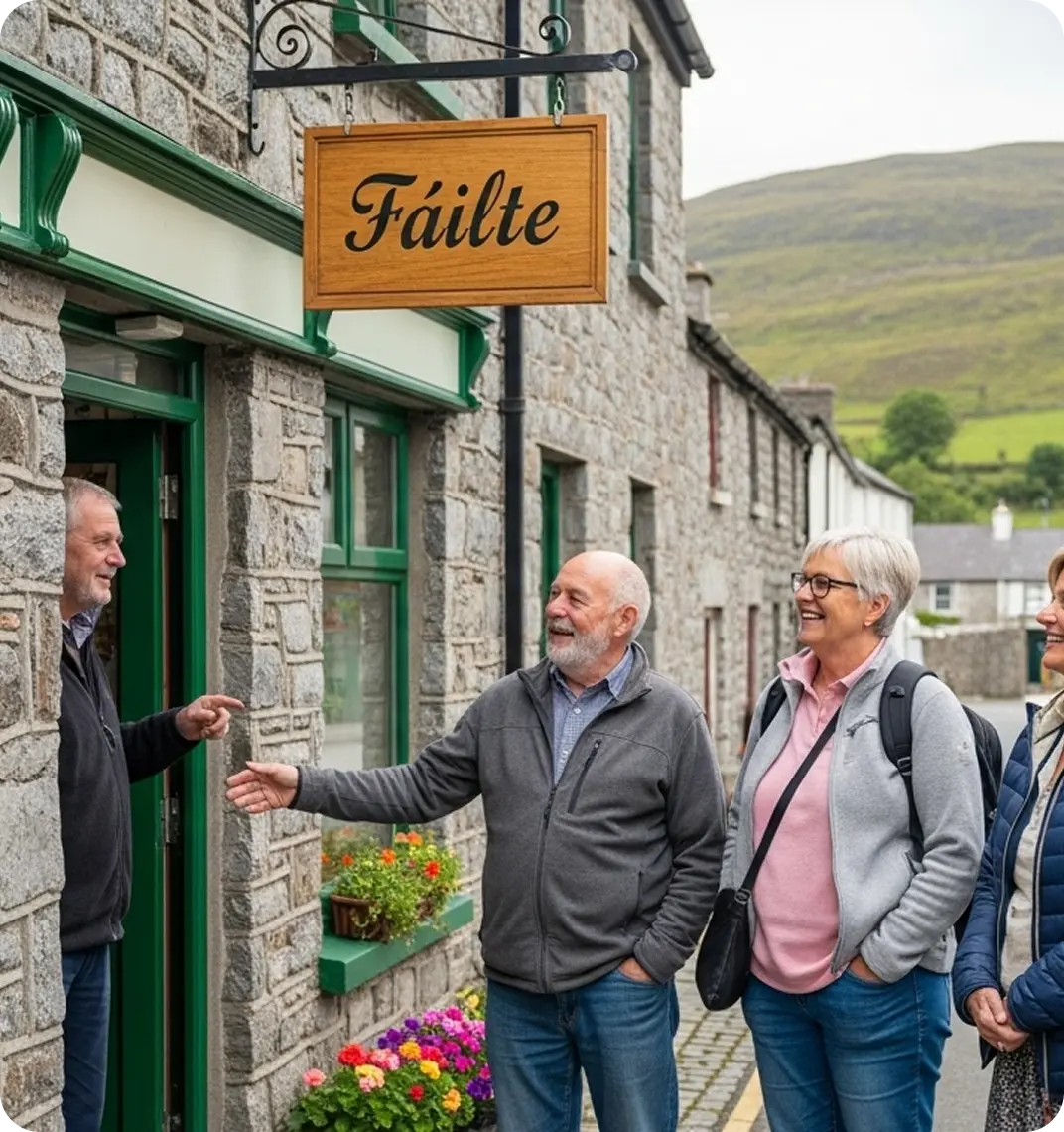Learn Irish with Rosetta Stone
See current dealsHave you ever dreamed of speaking Ireland’s native language? Irish, or Gaelic, is more than just words — it’s the sound of history, poetry, and song. Though English is widely spoken in Ireland, Irish remains a symbol of identity and heritage. From Dublin classrooms to the Gaeltacht regions of Galway and Donegal, Irish is alive and thriving.
Starting out may feel intimidating — the spellings look unfamiliar, and pronunciation isn’t always obvious. But here’s the good news: learning Irish is deeply rewarding. With patience and the right tools, you’ll unlock a language that connects you with Ireland’s heart and soul.
Why learn Irish?
Mastering a second language brings countless benefits, and Irish offers something special: a living connection to culture, heritage, and community. Whether you’re curious about your roots, planning to travel, or simply love the idea of learning a unique language, Irish is a meaningful choice.
Top reasons to learn Irish
- Reconnect with heritage: Many people of Irish descent learn Gaelic to connect with family history.
- Sharpen your mind: Irish grammar and pronunciation stretch your brain in new, exciting ways.
- Appreciate culture authentically: Enjoy Irish music, literature, and folklore in the original.
- Enhance your travels: Explore Ireland with a deeper sense of connection and belonging.
- Community and identity: Join learners and speakers in Ireland and around the world.
- Preserve a language: By learning Irish, you help keep this ancient language alive for future generations.
Irish language basics
Where is Irish spoken?
Irish is an official language of Ireland and the European Union. It’s taught in schools across the country, and it’s the daily language of the Gaeltacht regions in the west of Ireland. Worldwide, Irish is studied by hundreds of thousands of learners who want to connect with its culture and sound.
How long does it take to learn Irish?
With just 15 minutes a day, you can begin greeting people and introducing yourself in a matter of weeks. Fluency requires dedication, but Rosetta Stone helps you start speaking from the very first lesson.

Irish proficiency: from beginner to advanced
Beginner
Focus on fundamentals:
Greetings and introductions
Basic sentence structure
Asking questions
Everyday vocabulary
Intermediate
Build your skills:
Work with verb tenses (present, past, future)
Learn prepositions and sentence connectors
Expand conversational vocabulary
Advanced
Aim for fluency:
Master idioms and expressions
Explore the subjunctive mood and conditional
Learn specialized vocabulary for work, study, or literature
Core Irish skills
Pronunciation tips
Irish spelling can seem tricky at first, but patterns emerge with practice:
- Slender vs broad consonants:
Consonants change sound depending on nearby vowels. For example: bóthar (road) vs. beoir (beer).
- The letter "r":
Often rolled or tapped, giving Irish its musical rhythm. For example: cara (friend).
- Silent letters:
Many combinations, like “mh” or “bh,” are pronounced as a “v” or “w” sound. For example: mo bhróg (my shoe).
- Accents (fadas):
The fada (´) lengthens a vowel sound. For example: sean (old) vs. seán (a name).

Vocabulary and origins
Irish is a Celtic language, distinct from English, but you may notice familiar words in place names like Bally (from “baile,” meaning town) or Dún (fort). Some Irish words have entered English too, like “galore” (from go leor, meaning plenty).
Useful phrases
Start with essentials like:
- Dia duit (Hello)
- Conas atá tú? (How are you?)
- Slán (Goodbye)
Irish verbs
Irish verbs usually come first in a sentence (VSO order: Verb–Subject–Object). For example:
- Tá mé (I am)
- Tá tú (You are)
- Bhí sé (He was)
You’ll practice common verbs like bí (to be), déan (to do/make), and téigh (to go).
Nouns and gender
Irish nouns have two genders: masculine and feminine. This affects articles and adjectives:
- an fear mór (the big man)
- an bhean mhór (the big woman)
Plural forms and mutations add variety — you’ll learn the patterns step by step.
Regional variations
Irish dialects differ across Munster, Connacht, and Ulster, with slight differences in pronunciation and vocabulary. While variations exist, learners find they can understand speakers from any region with practice.
Best ways to learn Irish
- Online: Learn at your own pace with Rosetta Stone’s app and online platform. Sign up now!
- Private tutoring: Get personalized feedback and faster progress.
- Tandem partners: Practice Irish with native speakers through exchanges.
- Immersion: Visiting the Gaeltacht offers unmatched learning experiences.
Media and tools to support learning
- Books: Try short stories, folklore, or dual-language texts.
- Podcasts & music: Listen to Radio na Gaeltachta or Irish traditional songs.
- TV & movies: Add subtitles while watching TG4 programs or Irish films.
Learn Irish with Rosetta Stone
Rosetta Stone’s expert-designed lessons bring Irish to life:
Speak from lesson one
Voice recognition and native audio help you sound authentic.
Grammar made simple
Complex ideas are broken down clearly.
Spaced repetition
Smart reviews help you remember what you’ve learned.
Cultural immersion
Learn about Irish traditions, music, and festivals alongside the language.

Take the first step
Rosetta Stone offers a free first lesson to get you started. Whether you’re learning for heritage, travel, or personal growth, Irish is a language worth cherishing. And Rosetta Stone will support you every step of the way.
Get startedWhat’s included with your subscription
Achieve fluency faster with Rosetta Stone’s expert-designed Dynamic Immersion courses.
Perfect your accent with TruAccent speech recognition technology and sound like a native speaker.
Access to Rosetta Stone on web or mobile—learn anytime, anywhere!

